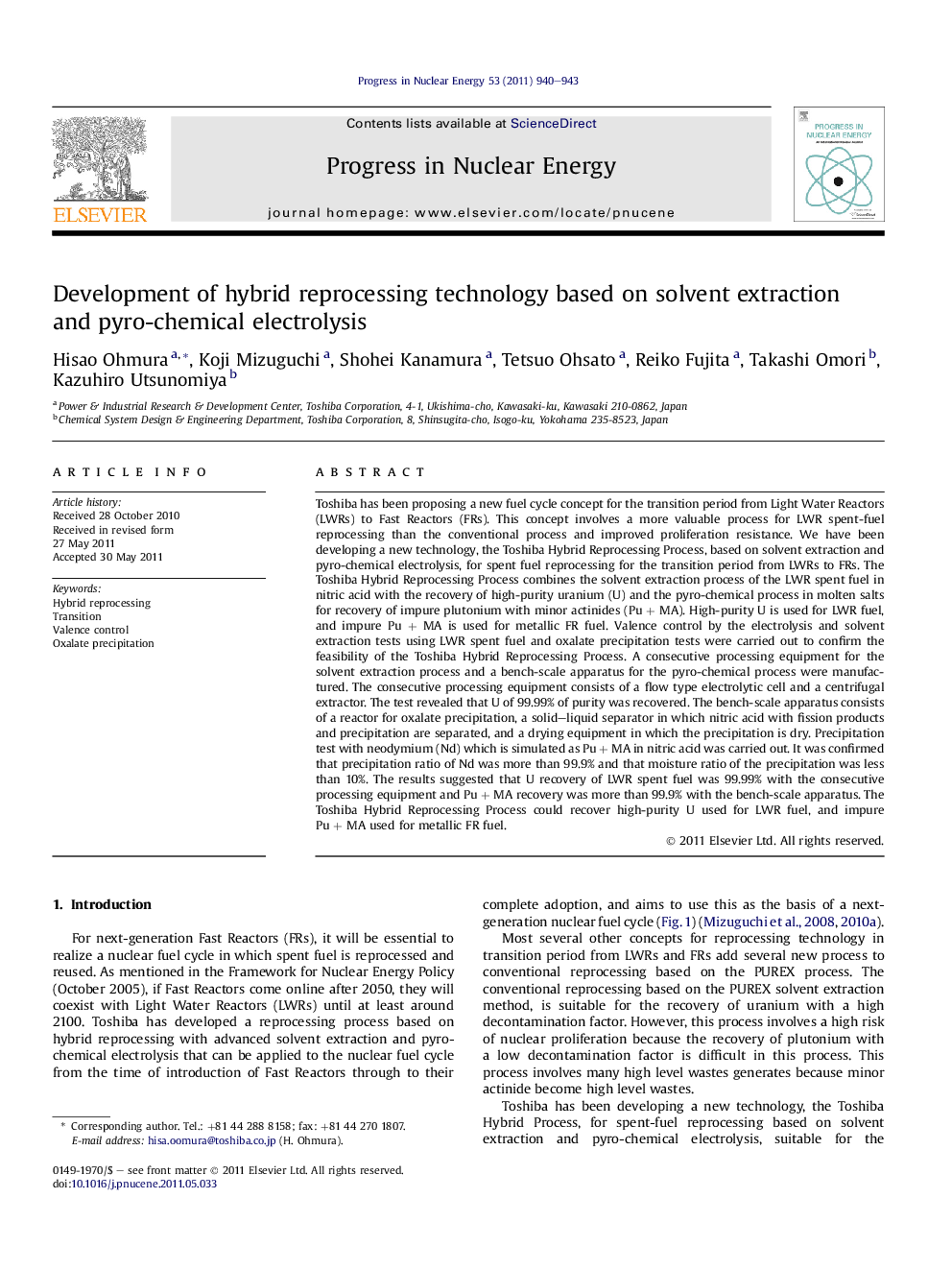| Article ID | Journal | Published Year | Pages | File Type |
|---|---|---|---|---|
| 1741232 | Progress in Nuclear Energy | 2011 | 4 Pages |
Toshiba has been proposing a new fuel cycle concept for the transition period from Light Water Reactors (LWRs) to Fast Reactors (FRs). This concept involves a more valuable process for LWR spent-fuel reprocessing than the conventional process and improved proliferation resistance. We have been developing a new technology, the Toshiba Hybrid Reprocessing Process, based on solvent extraction and pyro-chemical electrolysis, for spent fuel reprocessing for the transition period from LWRs to FRs. The Toshiba Hybrid Reprocessing Process combines the solvent extraction process of the LWR spent fuel in nitric acid with the recovery of high-purity uranium (U) and the pyro-chemical process in molten salts for recovery of impure plutonium with minor actinides (Pu + MA). High-purity U is used for LWR fuel, and impure Pu + MA is used for metallic FR fuel. Valence control by the electrolysis and solvent extraction tests using LWR spent fuel and oxalate precipitation tests were carried out to confirm the feasibility of the Toshiba Hybrid Reprocessing Process. A consecutive processing equipment for the solvent extraction process and a bench-scale apparatus for the pyro-chemical process were manufactured. The consecutive processing equipment consists of a flow type electrolytic cell and a centrifugal extractor. The test revealed that U of 99.99% of purity was recovered. The bench-scale apparatus consists of a reactor for oxalate precipitation, a solid–liquid separator in which nitric acid with fission products and precipitation are separated, and a drying equipment in which the precipitation is dry. Precipitation test with neodymium (Nd) which is simulated as Pu + MA in nitric acid was carried out. It was confirmed that precipitation ratio of Nd was more than 99.9% and that moisture ratio of the precipitation was less than 10%. The results suggested that U recovery of LWR spent fuel was 99.99% with the consecutive processing equipment and Pu + MA recovery was more than 99.9% with the bench-scale apparatus. The Toshiba Hybrid Reprocessing Process could recover high-purity U used for LWR fuel, and impure Pu + MA used for metallic FR fuel.
► We propose a new fuel cycle concept for the transition from LWRs to FRs. ► This concept involves a more valuable process for LWR spent-fuel reprocessing than the conventional process and improved proliferation resistance. ► Uranium could be recovered with high decontamination factors. ► 99% of actinides and rare earth elements could be recovered from simulated spent fuel solution.
